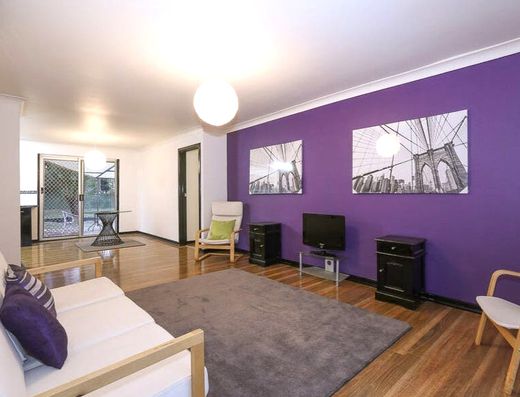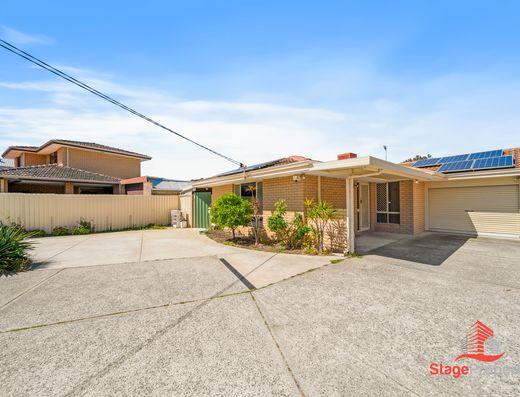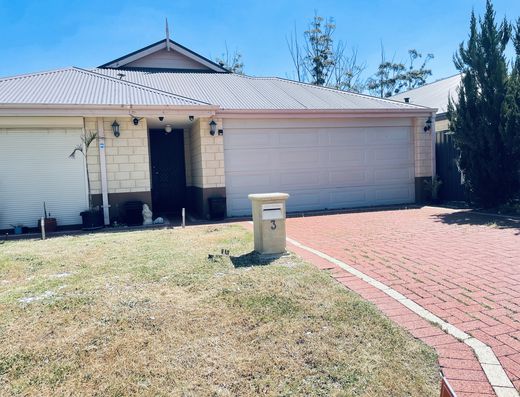Buying and Owning Commercial Property in The Perth Market

Buying and Owning Commercial Property in The Perth Market
By Andrew Taylor
Head of Commercial Property
The Perth commercial property market remains an attractive proposition for overseas investors as yields on offer are considered strong relative to that received in other countries.
Much of this market is driven by the resources sector which has retained strong results year on year for a prolonged period leading to the Western Australian economy posting strong surpluses.
Whilst there are very good opportunities in the market investors need to ensure they choose their asset wisely and undertake appropriate Due Diligence at pre purchase phase.
On many occasions a purchase is completed and items that could have been identified prior to this that could have resulted in negotiation of a different price or being fully informed of what financial implications there are which may influence the decision to progress further.
Australia and Western Australia has strong legislation in place that impacts on the acquisition and ownership of commercial property.
It is essential therefore to engage with the right businesses that specialise in the relevant fields to guide you through a purchase of commercial property.
For any investor from overseas they need to be aware that the foreign investment framework is set by the Foreign Acquisitions and Takeovers Act 1975 (the Act) and the Foreign Acquisitions and Takeovers Fees Impositions Act 2015 (the Fees Imposition Act), along with their associated regulations.
Further details can be found on the Foreign Investment website https://foreigninvestment.gov.au/ . There are local organisations that can assist greatly advising of obligations and compliance within the framework as well as financial implications.
As mentioned previously there is also other legislation that must be considered when acquiring commercial property in Western Australia and Perth.
Another key piece of legislation is the Commercial Tenancy (Retail Shops) Agreement Act 1985 which sets out requirements for owners and tenants of Retail Properties. It is important when reviewing lease agreements subject to this legislation that it is understood what implications it can have if any to revenue stream.
All these items can be identified through a forensic Due Diligence process. There is nothing worse than having purchased a commercial property with following this process and discover costly remediation requirements or not realising potential revenue slips accordingly.
It is strongly recommended that the right team is engaged to assist investors through this process to identify items such as this before committing to a property purchase.
Commercial Office
The Perth Central Business District office market is experiencing vacancy rates at 15.7% a slight decrease of 0.2 pps over the previous quarter. Year to date Net Absorption has reached 13,600 m2. There is evidence of a softening of the supply pipeline due to the elevated vacancy levels.
Prime Yields stabilised at a midpoint of 7.38% a slight softening on an annual basis and Secondary yields also softened over the last quarter to a midpoint of 9.0%.
Prime Gross Effective Rent sits at AUD $463/m2 per annum a year-on-year growth of 1.2%.
With the recent onset of the transition from Work from Home to Work Near Home the suburban office market has experience significant activity as employers and employees compromise on location of business operations from traditional central business locations to suburban locations. Y research have discovered this shift is to meet employee requirements to be within a 15-minute journey from work to home.
Reflective of this shift in work structure has led to the Suburban Office market to halve from 18.7% in 2019 to 9.4% currently. This rate is the lowest this market has experienced since Y research started collating data in early 2012. The previous record low occurred in the second half of 2012.
Y research determined that there were 9 suburbs which experienced a vacancy rate of lower than 5% and 2 suburbs higher than 20%.
There has been strong take up of smaller office suites (sub 150 sq m) across suburban office markets by companies that want a defined workspace, closer to the residence of the company’s directors/employees.
This take up has put upward pressure on rents and good purchase opportunities exist in the small office market. With an anticipation for this to remain in place purchasers may consider these assets as an investment opportunity.
As with any commercial office purchase it is important to find out the Weighted Average Lease Expiry (WALE) of an Asset in conjunction with an overall view of the vacancy rate level and take up of space. A property healthy WALE and low vacancy is an important consideration for any purchase.
Commercial Industrial
The industrial sector has been a very strong market performer during 2024. Over the past 12 months Prime Rent have increased by 18.1% on average, approximately 5 times above long-term average of 3.6%.
This result is underpinned by demand outstripping supply and availability leading to vacancy rates being sustained at record low levels in recent years. In a supply response to this some speculative larger projects have recently boosted a rise in the Vacancy rate to 2.8%.
60% of these current vacancies directly relate to the 10,000m2 segment. Reflecting supply additions 36% of current vacancies are sitting with these speculative developments.
That said the advent of continued diminishing supply is forecast to place further downward pressure on the vacancy rate.
This continued downward pressure anticipates continued rental growth with forecasts in the order of 5.0% for 2024 and 4.7% into 2025.
These strong market indicators are causing a strong appetite for Western Australian Industrial investment from major Institutional, high net worth and syndicator buyer pools looking to allocate capital.
It is for this reason that demand for Industrial land is high and anticipated to remain strong as institutions and local developers proceed to implement build-to-core strategies with major attention being placed on core in fill allocation to preserve pipeline development.
Within this market Owner Occupiers are predicted to continue being active for varying lot sizes and remains the mechanism for land and capital value growth in the medium term.
Current rental range is showing between $143/m2 to $162/m2.
The result of this is creating great difficulty for new investors to buy into the market particularly as agents are often completing transactions off market. When an asset is listed there is great demand making it hard to successfully complete transactions.
An advantage we have at Stage Property is we have a strong network that enable direct communication with many agents and in particular those who have a strong association with the industrial sector.
Commercial Retail
With prevailing economic uncertainty and ensuing decline in national retail spending growth, Western Australia’s retail turnover growth has continued to outdo the rest of the nation, with year-on-year growth of 3.2% as at September 2024, above the national average of 1.8%.
Western Australia has also achieved the fastest growth rate (2.8%) than any other State or Territory in Australia. This has been due to having the second lowest unemployment rate in the country and strong demand for skilled labour. The Western Australian government has put in place measures to encourage more migration to the state to help fill positions.
Through this growth and a retention of strong income and work opportunities has led to the strong retail spending growth.
Demand remains resilient with national fashion retailers and food and beverage operators continuing to secure new high-profile space in the Perth CBD and enclosed neighbourhood centres.
However relative to this the overall vacancy rate increased by 0.2 pps to 8.6% in the first six months of 2024 and continued to be raised across most sub-sectors, as a large percentage of retailers closed underperforming stores, especially in the sub-regional sub-sector.
Yields were stable across all sub-sectors over Q3 2024. On an annual basis, CBD, sub-regional and large format retail yields recorded no movement. For the regional and neighbourhood sub-sectors, a softening of 25 bps was recorded.
In terms of acquisition, it is important to undertake appropriate investigation to mitigate any risk. As with Commercial Office a healthy WALE is important as is the quality of tenant(s) in place.
As leases are subject to the Commercial Tenancy (Retail Shops) Agreement Act 1985 it is vital that each agreement is carefully reviewed to make sure that there are no obligations or requirements on a property owner that may impinge on future revenue especially should there be a shift in market conditions.
That said Retail Property can be a good asset to purchase and with the right mix of tenants or if a single tenanted property the right operator this can become a successful investment.
Conclusion
As with all investment it is of paramount importance to ensure there is a full understanding of the asset class that is being acquired.
At Stage Property we can assist investors through our Buyers Advocacy program that can be tailored to your specific needs accordingly.
With over 28 years of commercial property experience we know what to look out for and further networked with the right organisations to assist with your property investment purchase.
We encourage you to contact Andrew Taylor, Head of Commercial Property for a no obligation discussion to understand what your needs are and provide further information and general advice to assist you with your potential acquisition.
Disclaimer : Information contained herein is of a general nature and has been sourced from the following organisations JLL Perth Office dynamic report, JLL Perth retail dynamic report, CBRE Office Research Figures, Y -Research Suburban Office Report, Cushman and Wakefield’s Logistics and Industrial Market 2024 Outlook Q3 2024.
Stage Property are not financial advisors and therefore it is best to seek independent expert advice as to the benefits and financial risks inherent with investing in commercial property.








